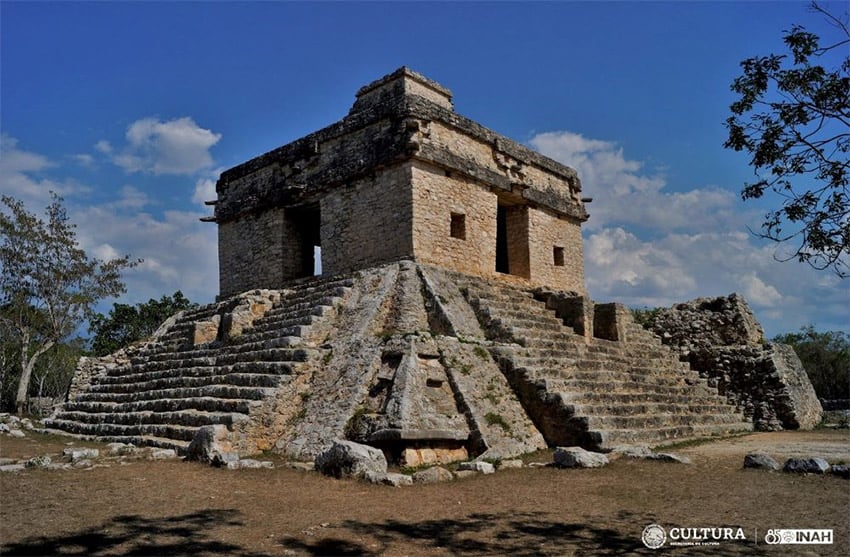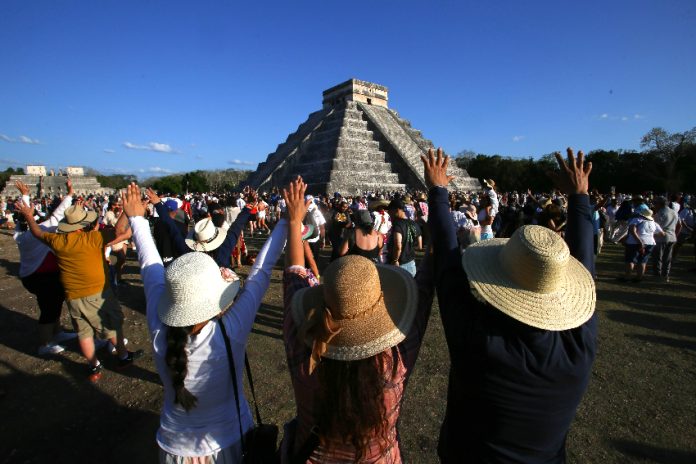The arrival of the spring equinox is a sight to behold at many archaeological sites in Mexico, including Chichén Itzá, where thousands are expected to gather to observe the event.
Mexico’s National Institute of Anthropology and History (INAH) said last week that 15,000-20,000 people are expected to visit the site in the state of Yucatán on March 20 and 21 to see what appears to be Kukulcán — a serpent deity of Maya mythology — slowly slithering its way down the northwest facade of the iconic El Castillo pyramid, aka the Temple of Kukulcán.
As the phenomenon continues for approximately 45 minutes, seven inverted isosceles triangles of shadow move around the pyramid until finally the light illuminates only the serpent’s feathered head.
Symbolically, the figure unites heaven, Earth and the underworld, as well as day and night. The ancient Maya — who were accomplished astronomers — believed that when Kukulcán appeared, it was to bless the crops and grant good health to worshipers.
Chichén Itzá, where a new Maya museum just opened, is just one of the many pre-Columbian sites in Mexico expected to receive an influx of visitors for the spring equinox, which will take place at 9:06 p.m. Mexican Central Time on March 19 — the moment when the sun is directly over the equator, and when night and day around the world are virtually the same length.
One site in Yucatán that won’t be open is Dzibilchaltún, where the sunrise creates striking images at the Temple of the Seven Dolls. However, the site has been closed since Jan. 30 for construction of a museum and visitor center, INAH reminded the public last week.

INAH suggested that people visit other pre-Columbian sites that will be open to visitors in the state, such as Kabah, Oxkintok, Aké, Uxmal and Labná, in addition to Chichén Itzá.
Other popular sites for spring equinox observation include Teotihuacán in México state; Cholula in Puebla; Monte Albán in Oaxaca; and Cuicuilco, Templo Mayor and Cerro de la Estrella (Mountain of the Star) in Mexico City.
At Oxkintok, the light of the afternoon sun passes through a portal and creates a halo on the floor precisely in the middle of an arc — a solar calibrator just as Maya astronomers/priests designed it to indicate the changing of the seasons.
Oxkintok, one of the oldest sites of the Puuc region, was inhabited from the Preclassic period (300 B.C. – A.D. 250) through the Late Postclassic (A.D. 1250-1500), reaching its principal importance between A.D. 475 and 859.
With reports from El Universal, PorEsto and Infobae
